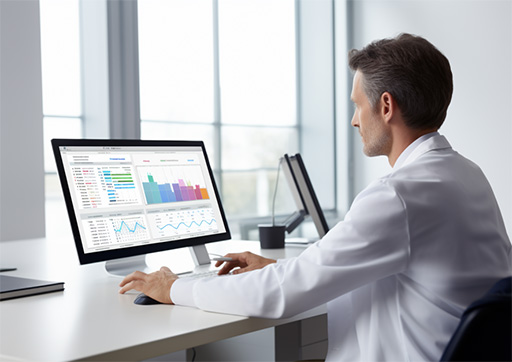The Role of Clinical Informatics in Health Care Today

They play a critical role in helping to improve care by providing accurate and timely information. They work with providers to design, implement, maintain, and deployment of healthcare systems. Medical informatics professionals may also help develop new ways of using technology to improve patient care.
Where Do They Work?
Clinical informatics is used in various settings, including hospitals, clinics, nursing, and pharmacies. It is essential in facilitating communication between healthcare professionals and their patients. By providing access to relevant patient data across different systems, health informatics allows for more coordinated care and improved coordination between providers. In addition, it enables hospitals to track long-term trends in patient health to improve care and reduce costs.
Educational Requirements
Common requirements for becoming clinical informatics include undergraduate degrees in computer science or related disciplines, experience working with electronic health records (EHRs), certification in healthcare information technology (CIT), or another relevant field.
They interact with health records to provide patient care. They use this knowledge to identify and resolve issues related to the EHR, such as incorrect information or data entry errors. Additionally, they may work with physicians and other healthcare providers on projects that improve the quality of care through better coordination between various systems.
Clinical informatics professionals learn about healthcare information technology (HIT) by working with different types of EHRs. They also attend American Medical Informatics Association conferences and other accreditation events focusing on topics in health literacy. The learning process helps them stay up-to-date on the latest developments in the field.

Three Domains Of Clinical Informatics
The three main domains are health data, healthcare services, and patient safety.
Health data refers to all the clinical information systems related to an individual’s physical or mental health, including demographic data such as age and sex; medical history; laboratory results; medication records; images (such as X-rays or MRIs); health records; and other digital files.
The services domain includes all the activities and technologies used to deliver patient healthcare. It encompasses everything from booking appointments to ordering tests.
Healthcare providers use the application of health informatics tools to manage patient data and tracking tools to optimize care and patient scheduling. They can also use it to improve communication with patients and their families, identify problems early on, and prevent them from becoming more significant issues.
Patient safety is a top priority for those who work in this domain. Clinical informatics tools can help identify potential hazards before they cause serious injuries or death.
Involved With Decision Making
Clinical informatics has long been a key player in decision-making, with the ability to mine data from electronic health records (EHRs) and other patient-centric sources to identify patterns and trends that can help improve decisions.
In recent years, as EHRs have become increasingly sophisticated, clinical medicine has also become more involved in developing algorithms that optimize plans for individual patients. By using big data approaches and machine learning algorithms, clinical research is helping make more intelligent choices based on their unique characteristics to offer patients.
As they become more involved in decision-making, the field will likely continue to evolve and improve. By using data retrieval and analytics to help make better decisions, clinical data is helping to improve patient care across the board.
Process Improvement Opportunities
Clinical informatics has long been seen as a valuable tool for process improvement. The ability to quickly and easily gather, analyze, and share information across healthcare organizations can help identify areas of improvement and track progress.
Clinical decision support tools can also guide clinicians on optimal options while minimizing patient harm. Hospitals can improve their care delivery system by working with clinical professionals and process engineers.
They work together to improve the efficiency and effectiveness of healthcare processes. Clinical decision support tools can help make informed decisions, while process engineers can help create efficient and effective systems. Together, these professionals form a powerful interdisciplinary team that can help improve patient care across the board.
What Is Applied Clinical Informatics?
Applied clinical informatics is the healthcare information exchange to improve care and efficiency. It includes using health records, data mining, clinical decision systems (CDSSs), telehealth, and remote monitoring and health information management (RMM). Applied Clinical Informatics helps providers make informed decisions about patient care by providing timely access to relevant medical information.
A CDSS software application helps make informed care decisions. It includes medication management, lab results tracking and planning. A CDSS can be used to improve the efficiency of healthcare by providing timely access to relevant medical information.
RMM is a technology that enables healthcare providers to monitor and manage patients remotely. It includes real-time monitoring of patient health, communication between healthcare providers and patients, and automatic reporting of incidents. RMM can help improve the efficiency of healthcare by reducing the need for face-to-face contact between patients and healthcare providers.
Future Careers in Clinical Informatics

Those interested in this area should seek accredited programs to learn more about the field and its potential career paths. It is a growing field, and there are many opportunities for those interested in working with computers to help patients.
Clinical informatics use BioScan to identify and track the progression of patients’ conditions. They can quickly and easily review patient data to help with assessment, prognosis, and planning. BioScan also allows for the identification of potential risk factors. The information can help improve care and ensure they receive the best possible health outcomes.
